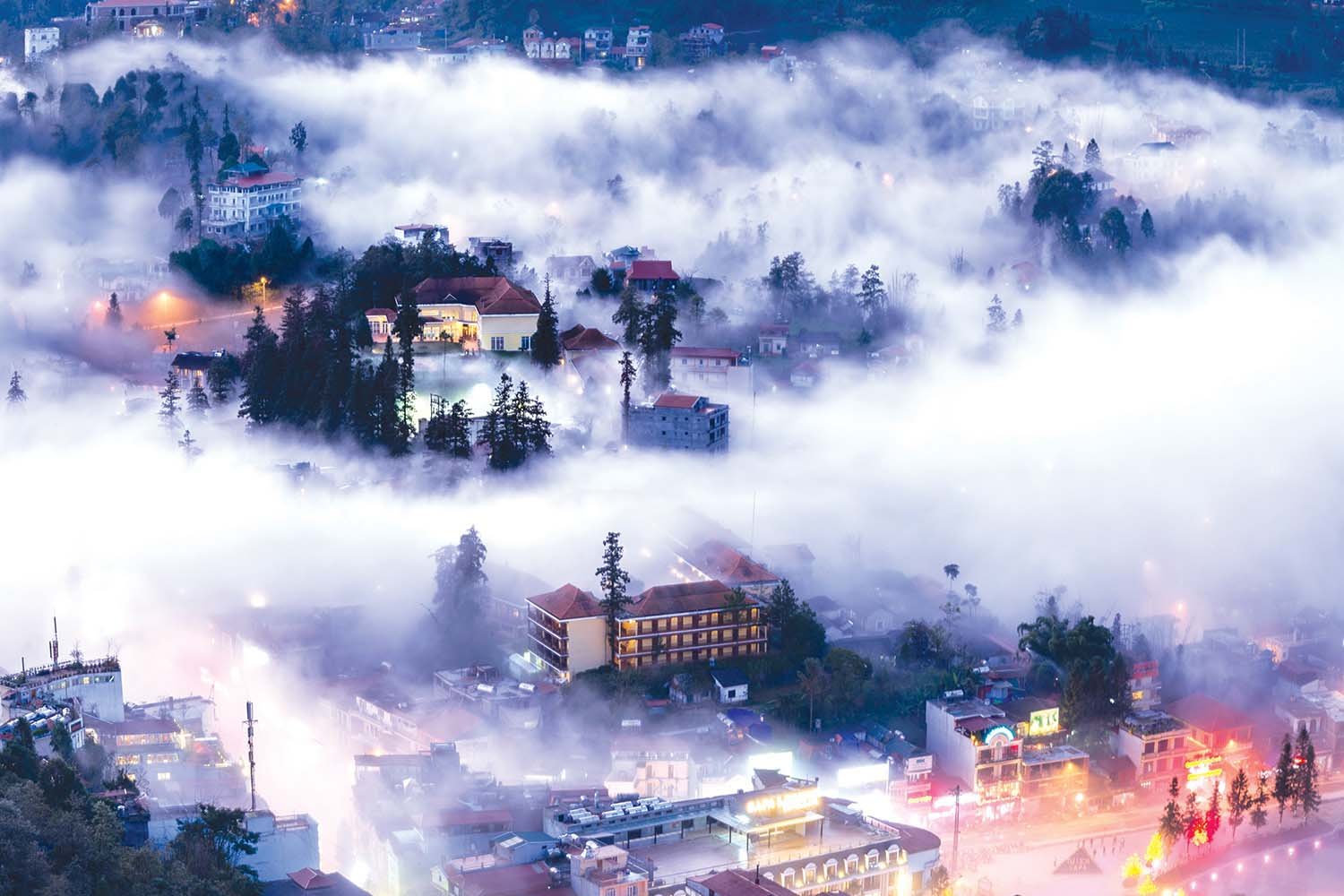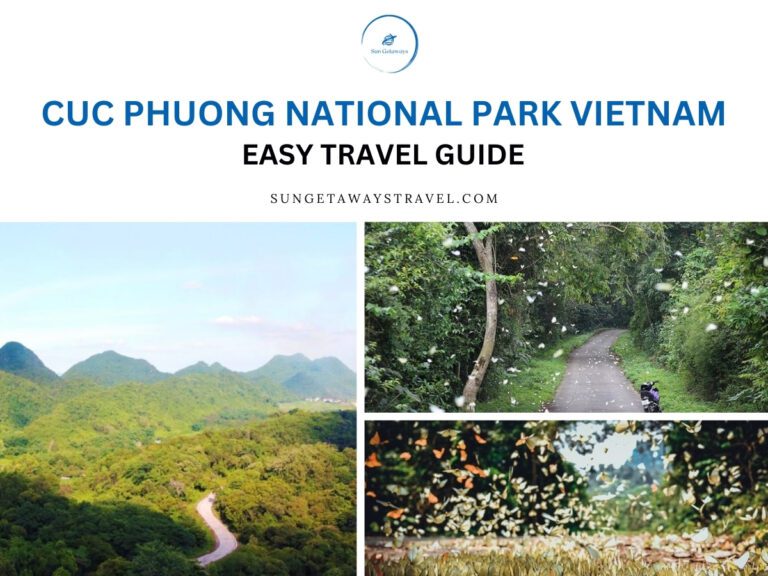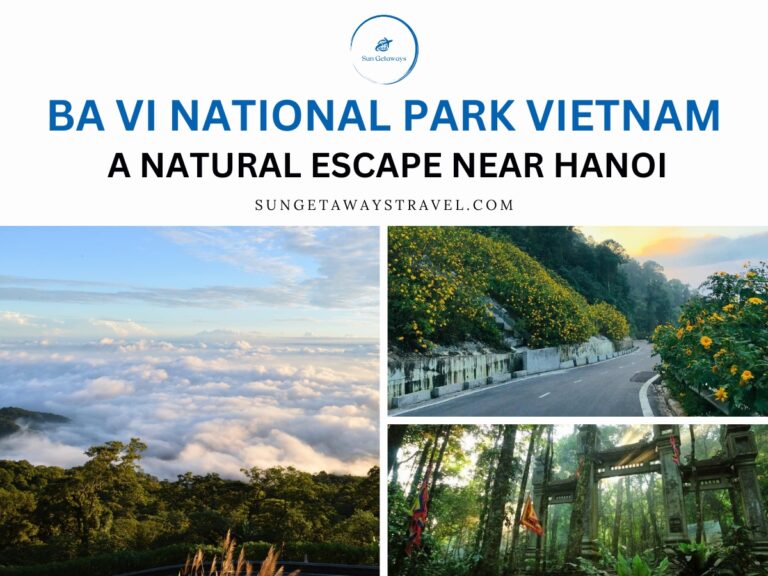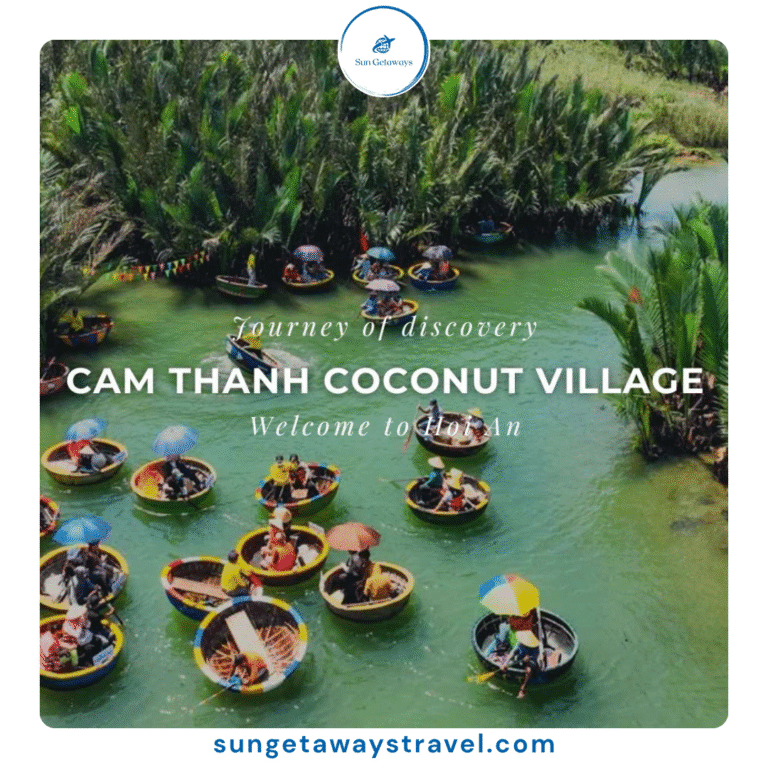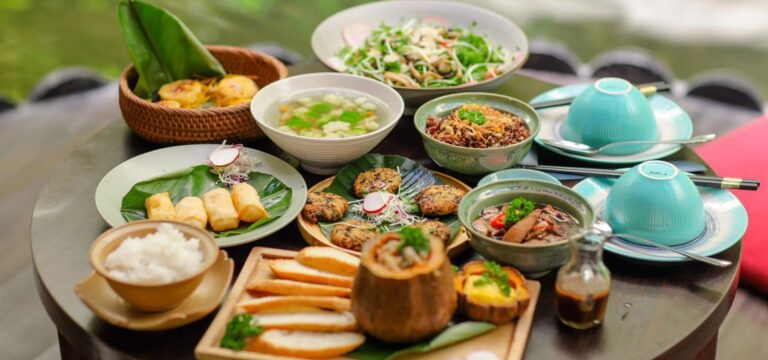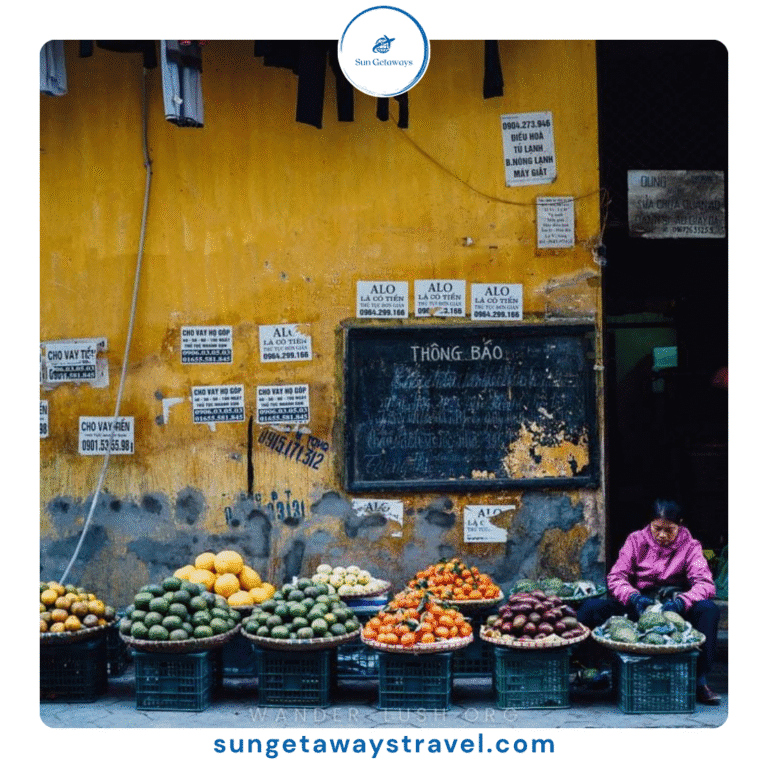How to Visit Yen Tu Mountain: Pagodas, Trails, and Travel Tips
Nestled in the heart of Quang Ninh Province, not far from the famous Ha Long Bay, Yen Tu Mountain is one of Vietnam’s most sacred and historically significant destinations. Known as the cradle of Vietnamese Buddhism, Yen Tu is not only a pilgrimage site but also a destination for travelers seeking breathtaking landscapes, cultural experiences, and spiritual peace. If you’re planning to explore this iconic mountain, this guide will walk you through its temples, hiking trails, and essential travel tips.
Why Visit Yen Tu Mountain?
Yen Tu Mountain rises majestically at 1,068 meters above sea level and is famed for its role in Vietnamese history. It was here that King Tran Nhan Tong renounced his throne in the 13th century and founded the Truc Lam Zen Buddhist sect. Today, thousands of pilgrims and tourists flock to Yen Tu annually to hike its trails, visit its temples, and experience the serene atmosphere.


The combination of spiritual significance, lush forests, and panoramic views makes Yen Tu a must-visit for anyone exploring northern Vietnam. Whether you’re in Quang Ninh for a few days or extending your your Ha Long trip, Yen Tu offers a unique contrast to the bustling bay.
Highlights of Yen Tu Mountain
Visiting Yen Tu Mountain is a journey that blends demanding physical pilgrimage with profound spiritual discovery. The mountain is rich with sites that illuminate the history of Vietnamese Buddhism.
1. The Pilgrimage Temples and Sacred Sites
Yen Tu Mountain is home to numerous pagodas and shrines, each marking a stage of the spiritual ascent.
- Giai Oan Pagoda (Giải Oan): Located at the foot of the mountain, this temple is the traditional starting point of the pilgrimage. Its name translates to “Vindicating Wrongdoing,” referring to the legend of King Trần Nhân Tông’s court ladies who drowned themselves here. The peaceful gardens and lotus ponds are ideal for quiet reflection before the climb.
- Hoa Yen Pagoda (Hoa Yên): Situated at 534 meters, this is the largest and most important temple complex on the main ascent path. It was the site of King Trần Nhân Tông’s primary residence and teaching center.
👉 Tip: This area is often shrouded in mist in the early morning, creating a mystical atmosphere. - Dong Pagoda (Chùa Đồng): Perched at the very summit (1,068m), this small bronze pagoda is the spiritual climax of the journey. Visitors believe that reaching Dong Pagoda brings immense spiritual merit.
👉 Valuable Information: The atmosphere is often misty and cool; bring a light jacket even on sunny days.
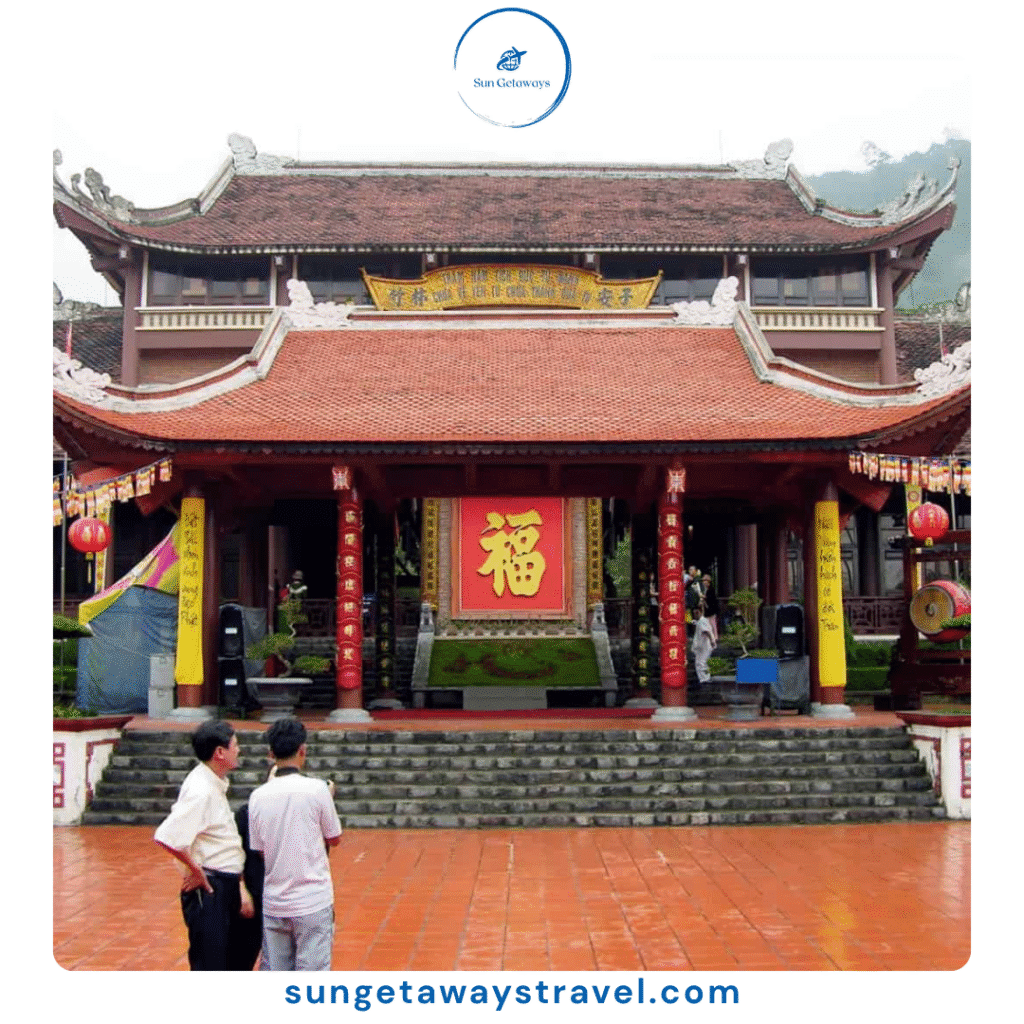

2. The Truc Lam Zen Center and Cultural Hub
Truc Lam Zen Monastery (Thiền Viện Trúc Lâm): While modern, this monastery captures the spirit of the Trúc Lâm Zen sect founded by the King-Monk. It serves as an active center for Buddhist study and practice.
👉 Unique Experience: Visitors can observe the daily routines of the monks or simply sit quietly in the main hall for a moment of meditation.
3. Breathtaking Natural Scenery and Views
The mountain itself is a national park treasure. Dense forests, ancient moss-covered stone paths, and fresh mountain air provide a refreshing escape.
- Panoramic Views: On clear days, the summit offers one of Vietnam’s most spectacular viewpoints, stretching over the surrounding hills and even offering glimpses of Ha Long Bay in the distance.
- Ancient Flora: Look for ancient pine trees, some hundreds of years old, that line the paths, adding to the sacred, timeless quality of Yen Tu Mountain.
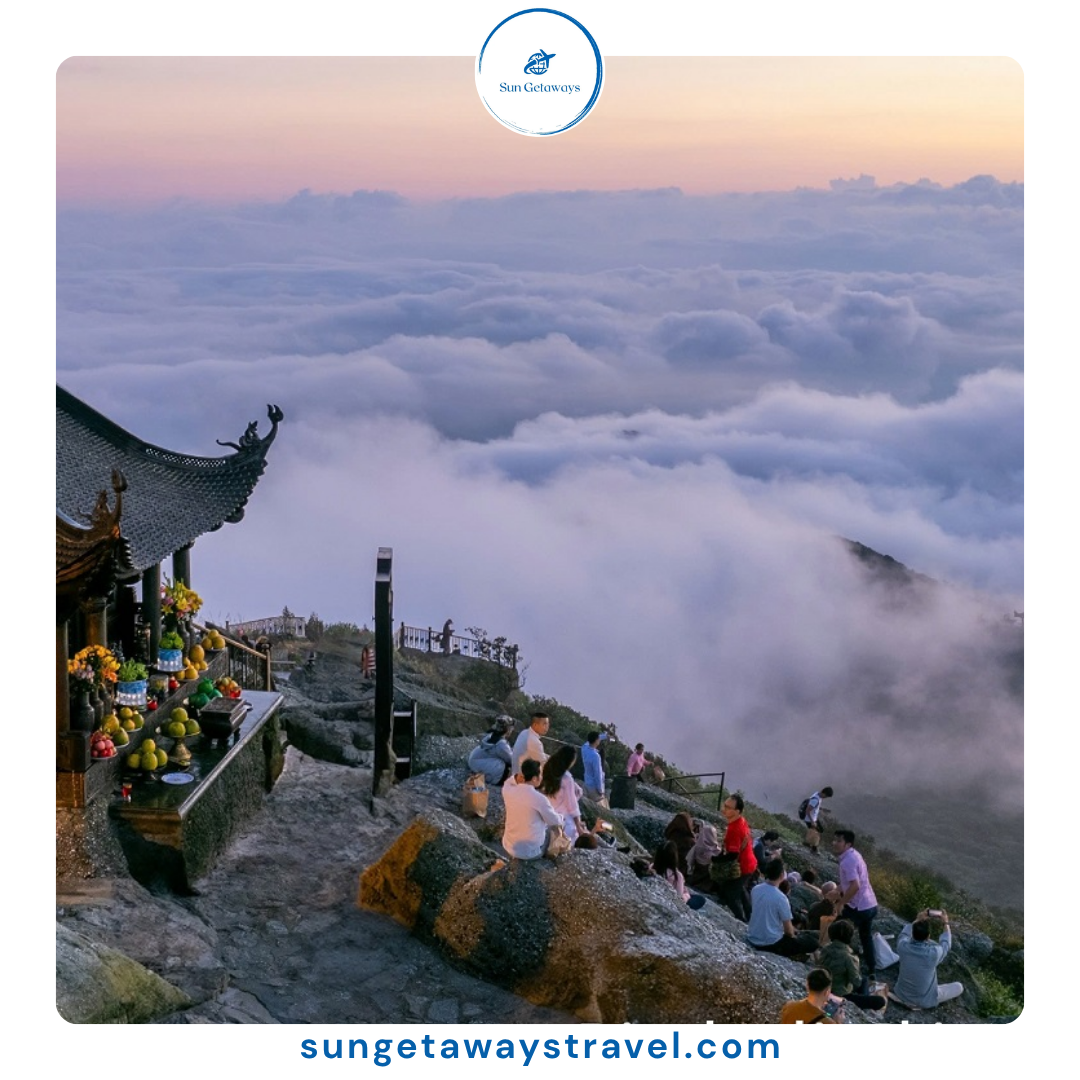
Hiking and Trails at Yen Tu
One of the most popular ways to explore Yen Tu Mountain is through hiking. The traditional pilgrimage route covers about 6 kilometers from the base to the summit. Here’s what you can expect:
- Trail Difficulty: Moderate to challenging. The path is steep in parts, with stone steps and uneven terrain, but rewarding for those who enjoy trekking.
- Time Required: The full hike to the summit and back can take 4–6 hours depending on your pace.
- Scenic Stops: Along the way, you’ll encounter multiple temples, meditation spots, and rest stations where you can pause to soak in the views.
If you’d like to experience the mountain without the demanding climb, a cable car system is available, reducing the journey to under an hour while still offering spectacular aerial views.
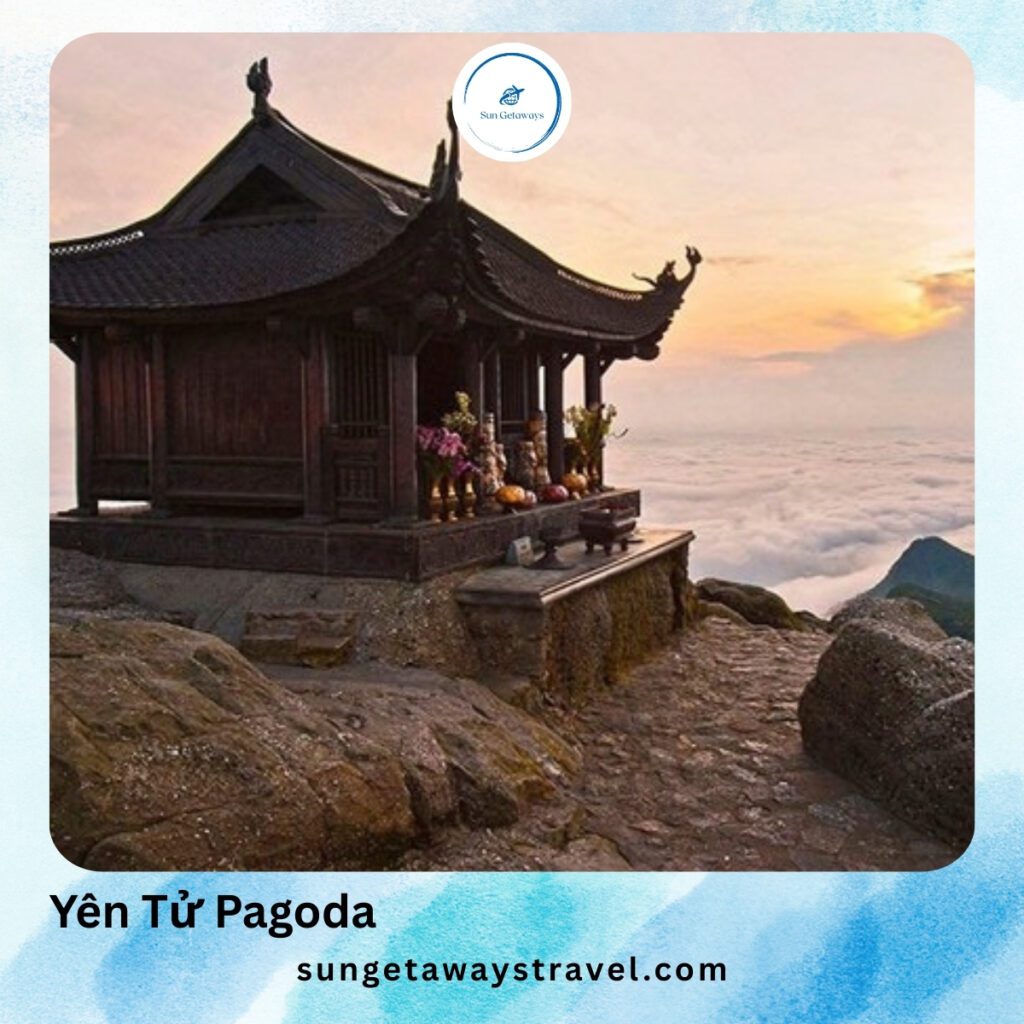

🚠 Want to enjoy Yen Tu without the hassle of planning transport and tickets? Contact Sun Getaways Travel via WhatsApp to book your complete Yen Tu adventure today.
Best Time to Visit Yen Tu Mountain
- Spring (January to March): This is the peak pilgrimage season, especially during the Yen Tu Festival, which begins after the Lunar New Year. Expect large crowds of pilgrims.
- Autumn (September to November): The weather is cooler, the skies clearer, and the trails less crowded. This is the best season for hikers and photographers.
- Summer (May to August): The mountain is lush, but the heat and humidity can make hiking more strenuous. Afternoon rains are common.
The climate on Yen Tu Mountain varies with elevation, so timing your visit is key. If your schedule is flexible, visiting outside festival season ensures a calmer experience.
How to Get to Yen Tu Mountain
From Ha Long City, Quang Ninh
- Distance: Around 50 kilometers.
- Travel Time: About 1.5 hours by car or bus.
This makes Yen Tu a perfect day trip from Ha Long Bay.
From Hanoi
- Distance: Roughly 130 kilometers.
- Travel Time: 3–4 hours by car or bus.
You can combine a Hanoi–Ha Long–Yen Tu itinerary for a varied northern Vietnam experience.
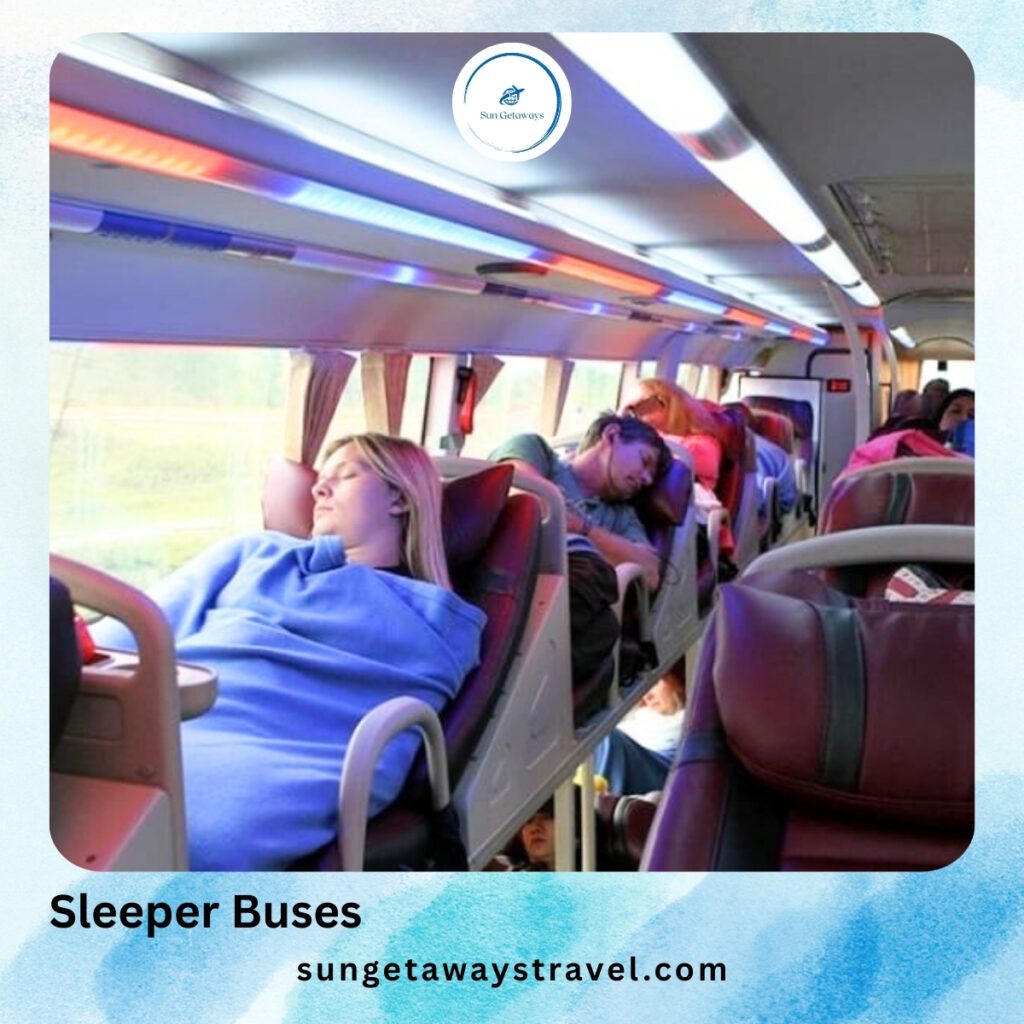

Transportation Options
- Private Car/Van: Convenient and flexible, ideal for small groups or families.
- Local Buses: Budget-friendly but less comfortable.
- Tours: Organized tours often include transfers, entrance fees, and guides.
(For long-distance travel, consider Vietnam’s cost-effective sleeper buses.)
✨ To save time and ensure comfort, Sun Getaways Travel can arrange private transfers from Hanoi or Ha Long directly to Yen Tu Mountain.
Travel Tips for Visiting Yen Tu
To ensure your journey up Yen Tu Mountain is both smooth and deeply rewarding, here are essential tips focused on the trails and spiritual customs:
- Wear Comfortable Shoes: The Yen Tu Mountain trails are paved but can be steep and become extremely slippery during the rainy season (June to August). If hiking the entire way, prepare for a strenuous, multi-hour climb.
- Dress Modestly: As the most important Buddhist center in Vietnam, modesty is mandatory. Ensure your shoulders and knees are covered. Avoid overtly casual or revealing attire, especially when entering pagodas. For tips, consult a Vietnam packing guide.
- Bring Water and Snacks: While small vendors sell refreshments, prices rise as you ascend. Carry adequate water and light snacks to keep your energy up while on the Yen Tu Mountain trails.
- Respect Local Customs: Many visitors come for spiritual reasons, so keep noise levels down and avoid disruptive behavior.
- Plan for the Cable Car: It saves significant time (hours of climbing) and energy, allowing you more time to explore the pagodas and enjoy the views. During peak festival season (early lunar year), book tickets in advance to avoid long queues. (Contact us for FREE, up-to-date information about Yen Tu Mountains and trails)
Combining Yen Tu with Nearby Attractions
Since Yen Tu Mountain is a highlight of Quang Ninh Province, it pairs perfectly with the region’s other world-renowned attractions. This combination offers a balanced itinerary of history, spirituality, and natural beauty.


- Ha Long Bay: A UNESCO World Heritage Site just a short drive away. After your mountain journey, relax on a cruise through limestone karsts and emerald waters.
- Cua Ong Temple: Another important spiritual site located in Cam Pha.
- Uong Bi City: The nearest urban center to Yen Tu, offering local food and markets.
Suggested 2-Day Itinerary for Yen Tu Mountain
This itinerary efficiently connects the spiritual ascent of Yen Tu Mountain with the natural majesty of Ha Long:
Day 1:
- Morning: Depart from Hanoi. Travel to the base of Yen Tu Mountain.
- Midday: Take the cable car (or hike) to Hoa Yen Pagoda and continue to the summit for Dong Pagoda.
- Evening: Return to the base; transfer to a hotel in Uong Bi or directly to Ha Long.
Day 2:
- Morning: Board a day cruise or overnight junk boat in Ha Long.
- Afternoon: Explore caves and kayak through limestone karsts.
- Evening: Enjoy the sunset and dinner on the bay before continuing your journey.
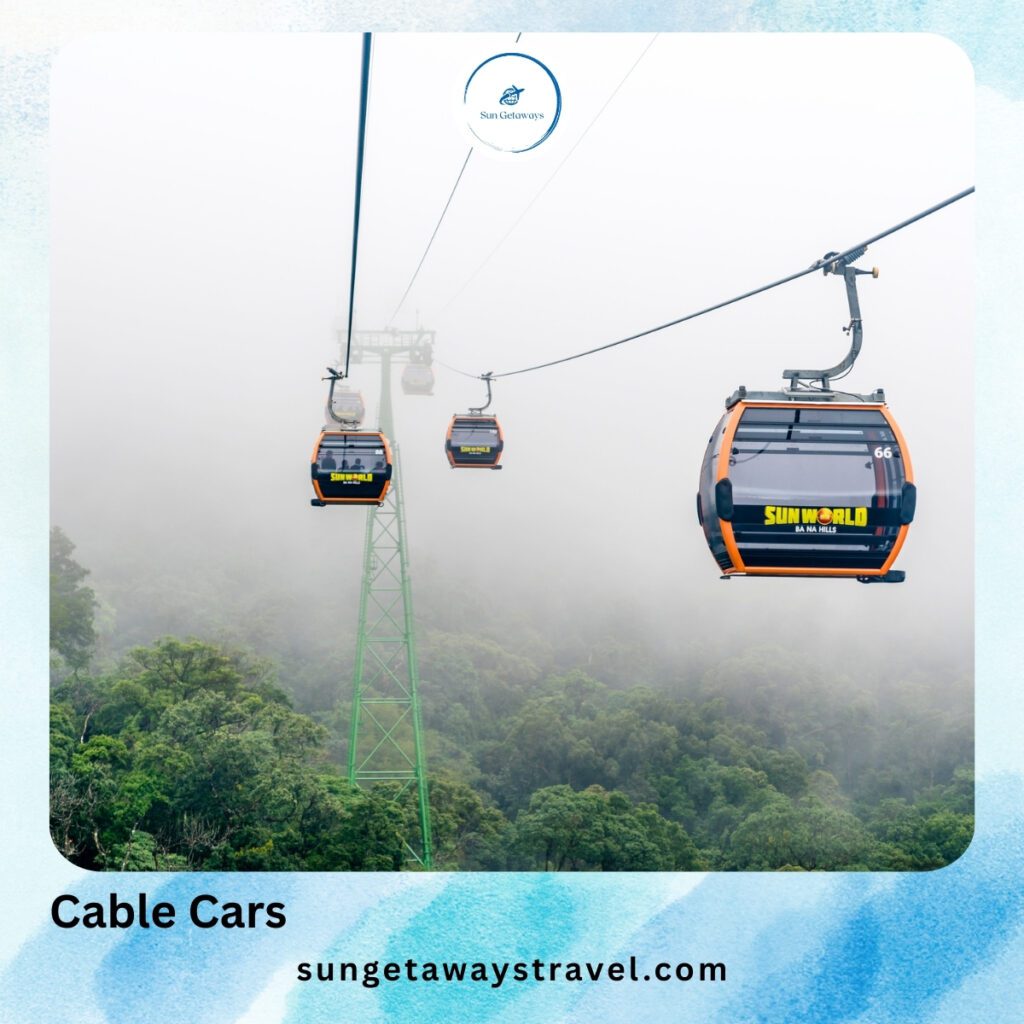

🌏 Let us design a tailor-made itinerary that connects Yen Tu with Ha Long and utilizes the best transport routes within Quang Ninh for a truly unforgettable northern Vietnam journey.
Final Thoughts
Visiting Yen Tu Mountain is not just a sightseeing activity—it’s an immersion into Vietnam’s spiritual heritage and natural beauty. From the serene temples and forest trails to the panoramic summit views, the Yen Tu mountain journey is as rewarding as the destination itself.
If you’re already exploring Quang Ninh or Ha Long, setting aside a day or two for Yen Tu will enrich your trip immeasurably.
🌟 Ready to experience Yen Tu without stress? Reach out to Sun Getaways Travel—we’ll craft the perfect tour for you, combining cultural depth, comfort, and unforgettable moments.
FAQs: Guide to Yen Tu Mountain
- Where is Yen Tu Mountain located?
Yen Tu Mountain is located in Quang Ninh Province, northeastern Vietnam, approximately 50 km from Ha Long Bay. - What is the significance of Yen Tu Mountain?
It is the most important Buddhist center in Vietnam, known as the cradle of the Trúc Lâm Zen (Thiền) sect, founded by King Trần Nhân Tông in the 13th century. - Is it possible to reach the peak without climbing?
Yes. You can take the cable car system almost to the summit (Đồng Temple), requiring only a short, moderate climb on foot to the final peak. - How long does it take to visit Yen Tu?
A complete visit, including using the cable car and exploring the main pagodas, typically requires a full day (6–8 hours). Climbing solely by foot can take over 8 hours round trip. - What is the best time of year to visit?
The best time is usually from October to December (dry season) or during the Yen Tu Festival (the 10th day of the first lunar month), though the festival period is extremely crowded.
Ask a question
Leave a Comment (0)
No questions yet. Be the first to ask a question!





